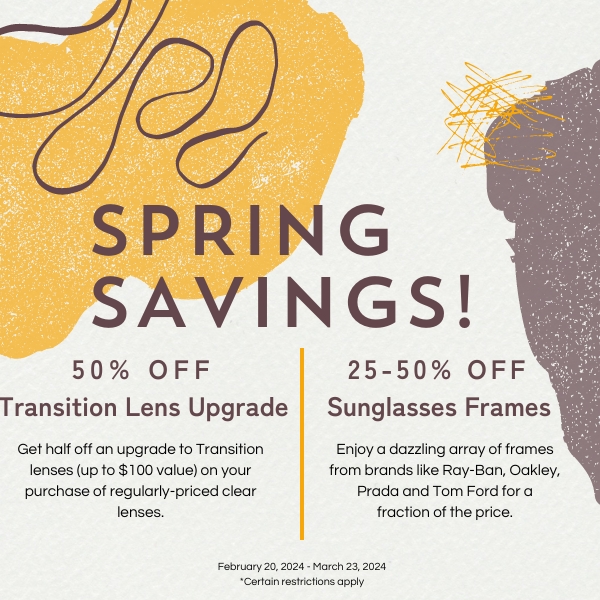Also known as nearsightedness, myopia is a type of vision error that causes close objects to appear clearly, and distant objects to appear blurry.
Causes of Myopia
In a myopic eye, the eyeball is usually too long from front to back. As a result, light rays focus at a point in front of the retina, as opposed to directly on the surface. This causes distant objects to appear blurry. A cornea that is too curved for the length of the eyeball, or a lens that is too thick, can also be the cause of myopia. For some, a combination of these problems is the cause of their myopia.
Symptoms of Myopia
Myopia has various symptoms, though each person may experience each to a different degree. These symptoms include:
- Blurred vision at distance objects (road signs, people’s faces, etc.)
- Squinting at distance objects to improve vision
- Having to move near materials (books, computer screen, etc.) closer to see
- Eyestrain and headaches
Diagnosing Myopia
During an eye exam, our optometrist will be able to determine if you have myopia. Eye exams usually begin with the visual acuity test. This test consists of a standardized chart with rows of letters that gradually decrease in size from top to bottom. Patients are asked to cover one eye and read out loud the smallest line of letters that they can see clearly. When done, the patient will cover the other eye and repeat the process.
If the test concludes the patient is nearsighted, the optometrist will use a retinoscope to shine light into your eyes to observe retina reflection.
Treating Myopia
Myopia can be treated through eyeglasses, contact lenses, and refractive surgery (laser eye surgery). The optometrist will discuss with you the pros and cons of each so that you can make an informed decision about which method of vision correction is best for your lifestyle.
Eyeglasses
Using curved lenses, eyeglasses refocus light rays directly onto the retina (instead of in front of it). Eyeglasses are the most common method of correction myopia.
Contact Lenses
Exactly like eyeglasses, contact lenses correct vision by refocusing light rays onto the retina, instead of in front of it. Contact lenses, however, rest directly on the eye opposed to in front of it. Many people prefer contact lenses to eyeglasses because they do not change your appearance when worn. They are also ideal for athletes or people with occupations that do not permit eyeglasses to be worn.
Refractive Surgery (Laser Eye Surgery)
This method of treatment changes the shape of the cornea to correct myopia. There are many different types of refractive surgery (also known as laser eye surgery), but the most common are LASIK and PRK. Refractive surgery comes with a few possible symptoms and risks
- LASIK. This type of refractive surgery works by removing the tissues from the inner layers of the cornea. It works by cutting and folding back a section of the outer corneal surface. Once completed, a laser removes precise amounts of tissue to reshape the cornea. After, the flap of outer tissues is placed back to heal. LASIK’s possible correction is strictly limited by the amount of corneal tissue that can be removed safely.
- PRK. PRK works by removing a thin layer of tissue from the cornea surface to change its shape. By doing so, light is allowed to focus more accurately on the retina. PRK is much like LASIK in the sense that the amount of possible correction is limited by the amount of tissue that can be safely removed.
After surgery, many patients experience dry eye symptoms. A small number of these patients can develop chronic dry eye syndrome. Other potential vision symptoms such as double vision, starbursts, glare, and halos may also develop. Instances of serious side effects are rare, and in most cases, temporary.



